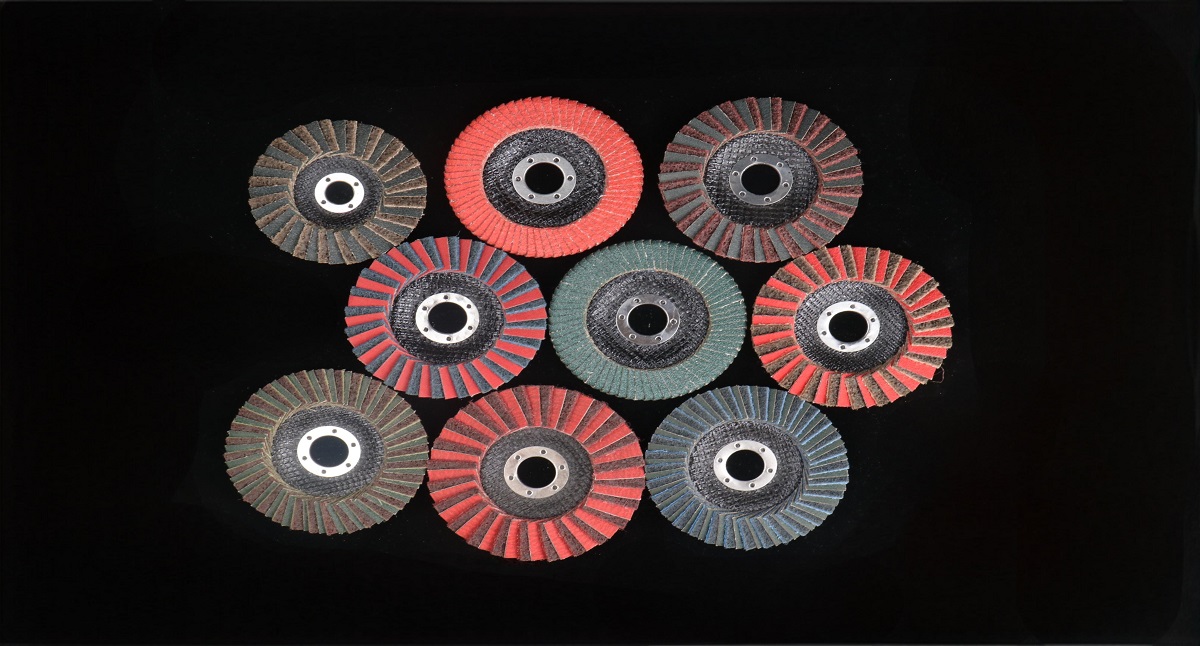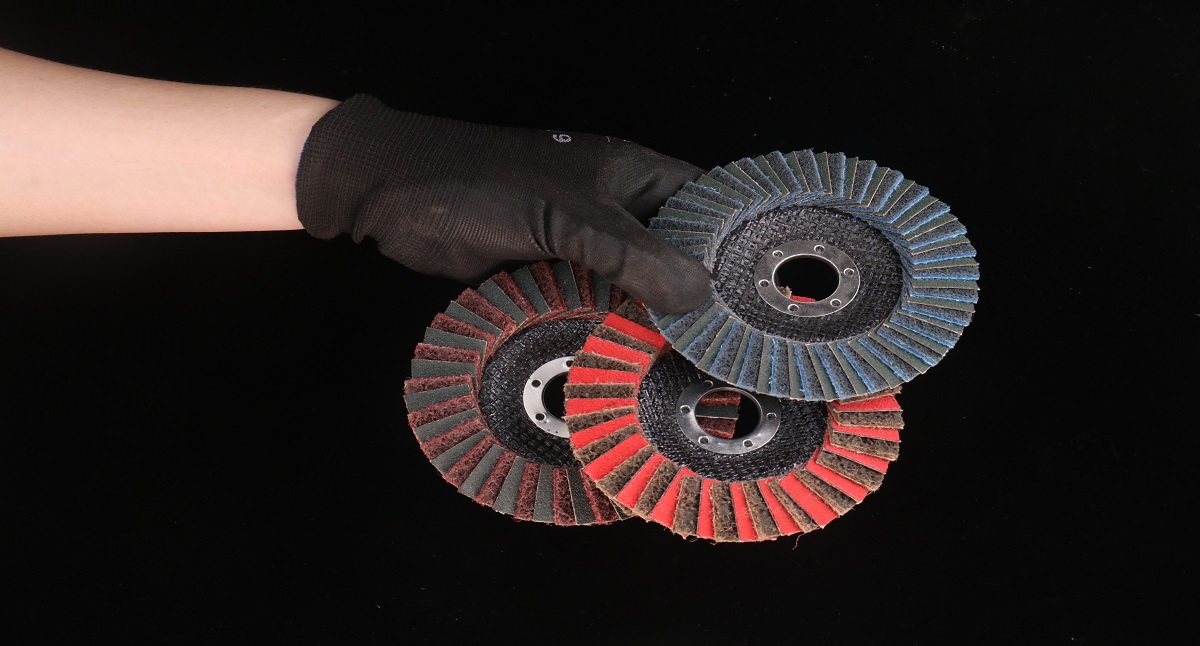Flap discs are essential tools for grinding, sanding, and finishing in metalworking and construction. They’re versatile, effective, and durable, but like any tool, their performance depends on how well you use and maintain them. If you’re not getting the full lifespan and efficiency out of your flap disc, you might be missing opportunities to save time and money.
In this article, we’ll explore how you can squeeze 100% out of your flap discs by focusing on selection, application, techniques, and maintenance. Whether you’re an experienced professional or just starting out, these tips will help you maximize the value of your flap disc and improve the quality of your work.
Understanding the Basics of a Flap Disc
A flap disc consists of overlapping abrasive “flaps” adhered to a backing plate, typically made from fiberglass, plastic, or metal. These flaps wear away as the disc is used, constantly exposing fresh abrasive materials. The disc is commonly used for metal grinding, finishing, and rust removal, though it’s also applicable for wood and composite surfaces.
Key Benefits:
- Versatility: Flap discs can grind, sand, and polish in a single tool, saving time by reducing the need to switch between discs.
- Efficiency: Their design provides faster material removal than conventional grinding wheels.
- Consistent Performance: Flap discs wear down evenly, maintaining cutting speed and finish quality throughout their life cycle.
Now that you know what a flap disc is and why it’s so popular, let’s look at how you can get the most out of one.
Step 1: Choosing the Right Flap Disc
To get 100% out of your flap disc, start with selecting the right one for the job. Flap discs come in various materials, shapes, and grits, each suitable for specific tasks. Choosing the wrong disc will limit your productivity and wear it out prematurely.
Disc Material
- Aluminum Oxide: Best for general-purpose use, particularly with metals like steel and iron. It’s a durable and cost-effective option.
- Zirconia Alumina: More aggressive than aluminum oxide, this material is ideal for tougher applications, such as grinding stainless steel and other hard metals.
- Ceramic: The most durable of all flap discs, ceramic is designed for high-demand applications where speed and long life are priorities. It remains sharp for an extended period, making it ideal for industrial projects.
Disc Shape
- Conical Discs (Type 29): These are angled discs that provide aggressive cutting and grinding. Ideal for rapid material removal.
- Flat Discs (Type 27): Best suited for finishing and working on flat surfaces. They offer more control but remove material at a slower rate compared to conical discs.
Grit Size
Choosing the right grit size for your application will determine the finish quality and material removal rate.
- Coarse Grits (24–40): Best for heavy material removal, such as grinding and shaping metal.
- Medium Grits (60–80): Ideal for general-purpose use, blending welds, and surface finishing.
- Fine Grits (100 and above): Used for polishing and light finishing tasks.
Step 2: Using Correct Application Techniques
Even with the right flap disc, improper use can result in poor performance and unnecessary wear. These techniques will help you optimize both disc life and work quality.
Correct Angling
- For Grinding: When removing material or deburring, hold the flap disc at a 15-30 degree angle to the workpiece. This allows the disc to contact the surface efficiently without wearing down the edges too quickly.
- For Finishing: For blending or polishing tasks, reduce the angle to about 5-15 degrees. This creates a smoother finish without gouging the material.
Apply Steady Pressure
- Applying too much pressure causes the disc to wear out faster while generating excessive heat, which can damage the material. Conversely, too little pressure reduces efficiency and slows down the process.
- Use a consistent and moderate pressure, allowing the flap disc to do the work rather than forcing it.
Proper Speed
- The speed at which you operate your grinder or sander also affects the lifespan of the flap disc. Running at the manufacturer’s recommended RPM ensures that the abrasive flaps work at their optimal level. Avoid exceeding the maximum rated RPM, as it can cause damage and reduce disc life.
Step 3: Maximizing Disc Life Through Maintenance
Maximizing the lifespan of your flap disc isn’t just about choosing the right disc or using the proper techniques—it also involves how well you maintain your tools. Here are some ways to extend the life of your flap disc through proper care.
Avoid Overheating
- Excessive heat can cause the adhesive holding the abrasive flaps to break down prematurely. To prevent overheating, take frequent breaks or alternate between multiple discs, allowing each one to cool down.
Keep the Workpiece Clean
- Contaminants on the surface of the material can lead to clogging and uneven wear on the flap disc. Before you begin working, ensure the surface is clean of debris, oil, or paint that could interfere with the disc’s performance.
Use the Whole Disc
- Many users tend to wear out only one part of the disc, especially near the edges. Rotate the tool slightly during use to ensure even wear across the entire surface of the disc. This not only maximizes the disc’s longevity but also improves performance.
Step 4: Know When to Replace the Disc
Understanding when a flap disc has reached the end of its useful life is key to maintaining efficiency. Overusing a disc that has worn down compromises the quality of your work and can damage your material.
Signs of a Worn Flap Disc:
- Reduced Cutting Power: If the disc isn’t removing material as effectively as it used to, it’s time to replace it.
- Visible Wear: If the abrasive flaps are worn down to the backing plate, continuing to use the disc can damage your workpiece or tool.
- Unusual Vibrations: A disc that wobbles or causes excess vibration is a sign that it’s no longer balanced and should be discarded.
Step 5: Safety First
Maximizing the lifespan and performance of your flap disc is important, but so is your safety. Here are a few precautions you should take when working with flap discs:
- Wear Personal Protective Equipment (PPE): Safety goggles, gloves, hearing protection, and appropriate clothing should always be worn when working with grinders or sanders.
- Inspect the Disc Before Use: Before mounting a new disc, inspect it for cracks, tears, or damage. Never use a damaged disc, as it can shatter at high speeds, causing serious injury.
- Secure the Workpiece: Make sure the material you’re working on is securely clamped or held in place to prevent accidents.
- Store Discs Properly: Store flap discs in a cool, dry place to avoid damage from humidity or temperature changes. Keep them away from chemicals or oils that could degrade the adhesive.
Step 6: Special Tips for Different Materials
Different materials respond differently to flap discs. To squeeze 100% out of your flap disc, you need to tailor your approach based on the material you’re working with.
For Stainless Steel
- Stainless steel requires a flap disc with heat-resisting properties like zirconia or ceramic. Avoid overheating the metal, as it can cause discoloration or warping.
For Aluminum
- Aluminum is prone to loading or clogging the flap disc. Using a disc with a grinding aid or lubricant helps reduce clogging and keeps the abrasive working efficiently.
For Wood
- Flap discs are excellent for wood sanding and shaping, but be sure to use lower grit numbers for rough work and higher grits for finishing. Use a lighter pressure to avoid removing too much material too quickly.
Conclusion
Getting 100% out of your flap disc involves more than just attaching it to a grinder and going to work. By choosing the right disc for the job, using the proper techniques, maintaining your tools, and knowing when to replace the disc, you can maximize both efficiency and longevity. Following these best practices will save you time and money, improve the quality of your work, and keep you safe on the job.
With these tips in mind, you’ll be able to fully leverage the benefits of flap discs and ensure they provide maximum value with every use.


